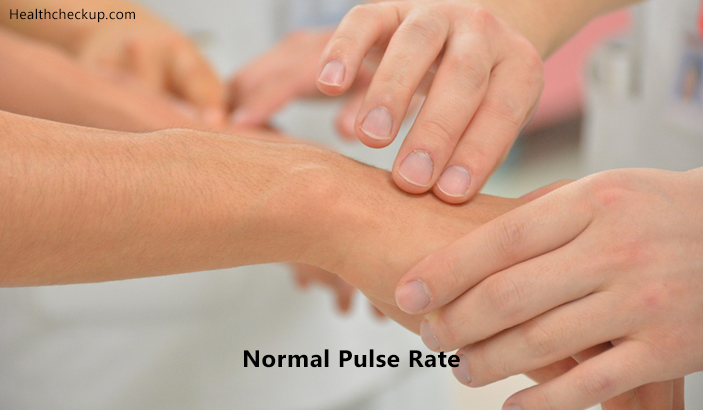Have you ever wondered what pulse rate actually stands for? Do you know what the normal pulse rate is? And how to measure it? Today we get to talk about one very significant topic that refers to our heart health and how we can enhance it. Let’s see what your pulse rate is telling you!
What Is Pulse Rate?
Pulse rate refers to the number of times that the arteries expand and contract in one minute as a response to the heart pumping blood. A lot of people mistaken the pulse rate for heart rate. Heart rate is the number of times that the heartbeats in one minute. So when we are talking about pulse rate, we are talking about arteries, and when we are talking about heart rate, we are talking about the heart itself. Perhaps the reason why these two are often mistaken is the fact that the pulse rate is equal to the heartbeat. When the heart contracts, it causes an increase in blood pressure in the arteries, which leads to a pulse to be registered. The pulse rate is used as a direct measure of the heart rate.
Pulse rate is easily measured, and everyone can do it. All that you have to do is to place the tips of the index, second, and the third finger on the palm side of the wrist, on the other hand, somewhere below the base of the thumb. You can search until you feel a strong pulse, which is where you can measure your pulse rate. Count the beats for 10 seconds. The number that you are going to get is to be multiplied by 6. This is your pulse rate. Another way to measure your pulse rate is to do the same procedure, but instead of placing your fingers on your wrist, you can place them on your lower neck on either side of the windpipe.
Resting Pulse Rate vs. Maximum Pulse Rate
There is a difference between your resting and your maximum pulse rate. When you are resting, your heart pumps the lowest amount of blood as a way to supply the whole body with the much-needed blood. This is when a resting pulse rate is to be measured. When you are sitting still, lying down, and being relaxed and calm, resting pulse rate is present. On the other hand, the maximum pulse rate is when the heart is working the hardest in order to supply your body with blood. This happens whenever you are being physically active, especially when you are doing a heavy workout, running, etc.
What Is The Normal Pulse Rate For Adults?
For adults, the normal pulse rate is considered to be around 60 beats per minute. This is usually their resting pulse rate. Their pulse rate can go as high as 100 if the individual is using certain medications, has a fever, anemia, etc. If the resting pulse rate is constantly at 100 beats per minute, a doctor needs to be consulted as soon as possible. The maximum pulse rate can be around 150 to 180 beats per minute, depending on the age of the individual.
What Is A Good Pulse Rate For Women?
The normal pulse rate for women should be 60 to 100 beats per minute. A good pulse rate, however, is considered to be around 60 to 70 beats per minute. A pulse rate that is constantly above 80 needs to be discussed with a doctor. A high pulse rate can indicate an increased risk of a heart attack.
What Is A Good Pulse Rate For Men?
For men, the same values apply to women. Men are more likely to have a pulse rate of 60 beats per minute. In addition, for many professional athletes, a pulse rate of around 40 beats per minute is also considered to be normal.
What Is The Normal Pulse Rate For Children?
For children aged 6 to 15, the normal resting pulse rate is around 70 to 100 beats per minute. Babies have the highest pulse rate, with around 180 beats per minute. The pulse rate slows down with their age until it reaches the limit of the normal pulse rate of an adult.
Normal Pulse Rate By Age – Infants & Children
| Age | Pulse Rate |
|---|---|
| < 1 year | 110 – 160 |
| 1 – 2 year | 100 – 150 |
| 2 – 5 year | 95 – 140 |
| 5 – 12 year | 80 – 120 |
| > 12 year | 60 – 100 |
How To Lower Pulse Rate Naturally?
In order to lower your high pulse rate, you need to practice mindful breathing. It is an effective technique that will help you to lower your high pulse rate at moments when you feel anxious or stressed. Exercising is also a great way to combat a high pulse rate. Smoking and a sedentary lifestyle seem to have the greatest negative effects on one’s pulse rate. Make sure to eat more fish since fish is the biggest source of the much needed Omega-3 fatty acids that are essential for your heart health.
Conclusion
A normal pulse rate is easily measured using just your fingers. It takes a couple of seconds, and it reveals so much more information about your heart health. Create a habit for yourself where you track your normal pulse rate and consult your doctor when you notice that your pulse rate is constantly elevated.
Doctor, author and fitness enthusiast, Ahmed Zayed, MD, is a surgery resident with a passion for helping people live a happy healthy life. He is the author of numerous health-related books and contributor to several medicine, health and wellbeing websites.









